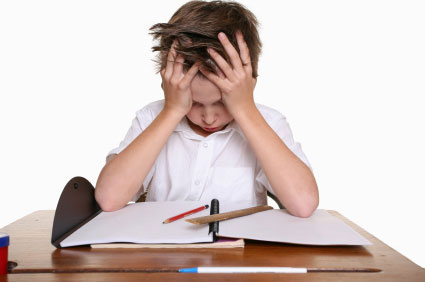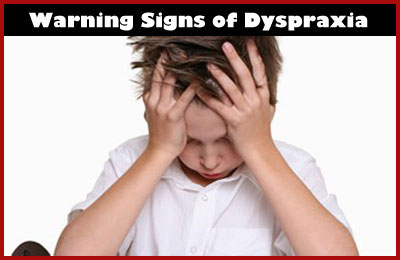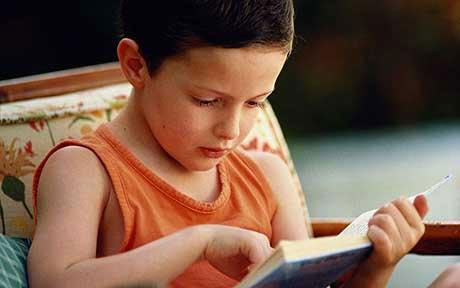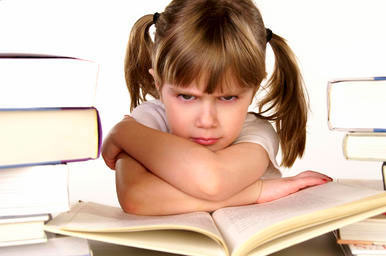Dysgraphia is a kind of learning disability in children as well as in some adults. Read more about symptoms of dysgraphia its types and treatments. Dysgraphia is a kind of dyslexia disorder. It is a learning disability which revolves more around writing skills. It also affects the grasping skills of the child. This disorder is found in adults in very rare cases. The actual cause of this the disorder is not known but researchers are keen on finding out what it can be. Read on and know more about dysgraphia. In this articleWhat is dysgraphia?Symptoms of dysgraphiaTypes of dysgraphiaCoping with dysgraphia What is dysgraphia? Dysgraphia is a neurological disorder. Dysgraphia is also popularly known as motoragraphia. It can be hereditary or it may be caused due to brain injuries or strokes. A dysgraphic is unable to write proper shaped and sized letters with proper spellings. They have very bad hand writing. Person facing this disorder lacks fine motor skills. However, they do not face any other academic problems. In fact children facing dysgraphia may have better abilities in mathematics or in other related fields. Symptoms of dysgraphia Here are some commonly observed symptoms of dysgraphia. These symptoms can be seen even after children have adequate knowledge and normal training. Very poor structure of words Habit of mixing lower and uppercase letters Improper and an improper way of holding pencil Disability of putting thoughts and ideas in writing Habit of speaking words while writing Incomplete words and lots of omitted words while writing Showing disinterest in writing and drawing Experiencing pain while writing in rare cases Showing disturbance during the writing task Varying speed of writing in each case, either increased or decreased Types of dysgraphia Researchers have identified three basic types of dysgraphia which are as follows. However study is in progress to find its root causes and more specific types. Motor dysgraphia As the name suggests the children facing this disorder lacks fine motor skills. Children suffering with motor dysgraphia are unable to avoid mistakes while writing even if copied from other source. They also lack proper muscle tone. The pattern of writing is slanting in most of the cases but their spelling skills are good. Dyslexia dysgraphia In this type of dysgraphia the children lack spelling skills but are able to write looking at the copy. It is not necessary that each person coping with dysgraphia will have dyslexia. Spatial dysgraphia It is the condition where children are unable to understand the spacing characteristics while writing. Sometimes too much space or sometimes no space can be seen between the words and letters. Coping with dysgraphia Dysgraphia disorder is not a permanent disorder. With some efforts and techniques this disorder can be corrected. Dysgraphic children possess expertise in other fields. This means that they can cope with this disorder too. With a little hard work and lots of support they can develop their writing skills. Here are some ways which can be helpful for coping with dysgraphia. Methods of learning Normal method of teaching and learning is not suitable to the dysgraphic children. Therefore other methods should be adopted. Taking help of charts, big letters, speed writing and reading can prove to be helpful. Regular practice Childern suffering with dysgraphia need regular practice right form scratch. Apart from practice they also need emotional support and special care. For improving writing, parents should provide children with writing material that children like. Instead of writing, parents can ask their child to type. This might increase interest in writing. Bring about small changes Parents and teachers should bring about small changes in teaching and learning regime. For improving the grip of such children they should be provided with suitable writing material available in the market. They should be given extra time to complete their homework and exams. If the child is finding writing too difficult then a writer can be engaged. Child can dictate and copy it later on. You can also use papers consisting of letters in dotted form, so that children can overwrite and improve writing. You can also help the child to write by holding his or her hand while writing. You can also teach some hand exercises to your child to improve the finger grip. Meditation Apart from all the changes in learning and teaching style some spiritual methods are essential. Meditation is one such method which helps to make mind stable. This will also help increase the concentration and reduce frustration while writing. Meditation will help the child to increase the focus on writing. You should encourage your child to perform such activities at an early stage. Your effort will surely pay-off in the long run. A recipe of hard work, love and care will surely improve your childs writing skill. However on the other hand let your child gain mastery in the field of his or her interest. Though writing is essential your child can be a rising star in other fields like acting, sports, music etc. You just need to find the strengths of your child and help him or her to work on it. You can give new wings to your child to fly in the wide open sky and find his own space.
Dysgraphia is a kind of learning disability in children as well as in some adults. Read more about symptoms of dysgraphia its types and treatments. Dysgraphia is a kind of
dyslexia disorder. It is a
learning disability which revolves more around writing skills. It also affects the grasping skills of the child. This disorder is found in adults in very rare cases. The actual cause of this the disorder is not known but researchers are keen on finding out what it can be. Read on and know more about dysgraphia.
What is dysgraphia?
Dysgraphia is a neurological disorder. Dysgraphia is also popularly known as
motoragraphia. It can be hereditary or it may be caused due to brain injuries or strokes. A dysgraphic is unable to write proper shaped and sized letters with proper spellings. They have very bad hand writing. Person facing this disorder lacks fine motor skills. However, they do not face any other academic problems. In fact children facing dysgraphia may have better abilities in mathematics or in other related fields.
Symptoms of dysgraphia
Here are some commonly observed symptoms of dysgraphia. These symptoms can be seen even after children have adequate knowledge and normal training.
- Very poor structure of words
- Habit of mixing lower and uppercase letters
- Improper and an improper way of holding pencil
- Disability of putting thoughts and ideas in writing
- Habit of speaking words while writing
- Incomplete words and lots of omitted words while writing
- Showing disinterest in writing and drawing
- Experiencing pain while writing in rare cases
- Showing disturbance during the writing task
- Varying speed of writing in each case, either increased or decreased
Types of dysgraphia
Researchers have identified three basic types of dysgraphia which are as follows. However study is in progress to find its root causes and more specific types.
Motor dysgraphia As the name suggests the children facing this disorder lacks fine motor skills. Children suffering with motor dysgraphia are unable to avoid mistakes while writing even if copied from other source. They also lack proper muscle tone. The pattern of writing is slanting in most of the cases but their spelling skills are good.
Dyslexia dysgraphia In this type of dysgraphia the children lack spelling skills but are able to write looking at the copy. It is not necessary that each person coping with dysgraphia will have dyslexia.
Spatial dysgraphia It is the condition where children are unable to understand the spacing characteristics while writing. Sometimes too much space or sometimes no space can be seen between the words and letters.
Coping with dysgraphia
Dysgraphia disorder is not a permanent disorder. With some efforts and techniques this disorder can be corrected. Dysgraphic children possess expertise in other fields. This means that they can cope with this disorder too. With a little hard work and lots of support they can develop their writing skills. Here are some ways which can be helpful for
coping with dysgraphia.
Methods of learning Normal method of teaching and learning is not suitable to the dysgraphic children. Therefore other methods should be adopted. Taking help of charts, big letters, speed writing and reading can prove to be helpful.
Regular practice Childern suffering with dysgraphia need regular practice right form scratch. Apart from practice they also need emotional support and special care. For improving writing, parents should provide children with writing material that children like. Instead of writing, parents can ask their child to type. This might increase interest in writing.
Bring about small changes Parents and teachers should bring about small changes in teaching and learning regime. For improving the grip of such children they should be provided with suitable writing material available in the market. They should be given extra time to complete their homework and exams. If the child is finding writing too difficult then a writer can be engaged. Child can dictate and copy it later on.
You can also use papers consisting of letters in dotted form, so that children can overwrite and improve writing. You can also help the child to write by holding his or her hand while writing. You can also teach some hand exercises to your child to improve the finger grip.
Meditation Apart from all the changes in learning and teaching style some spiritual methods are essential. Meditation is one such method which helps to make mind stable. This will also help increase the concentration and reduce frustration while writing.
Meditation will help the child to increase the focus on writing. You should encourage your child to perform such activities at an early stage.
Your effort will surely pay-off in the long run. A recipe of hard work, love and care will surely improve your child's writing skill. However on the other hand let your child gain mastery in the field of his or her interest. Though writing is essential your child can be a rising star in other fields like acting, sports, music etc. You just need to find the strengths of your child and help him or her to work on it. You can give new wings to your child to fly in the wide open sky and find his own space.

































